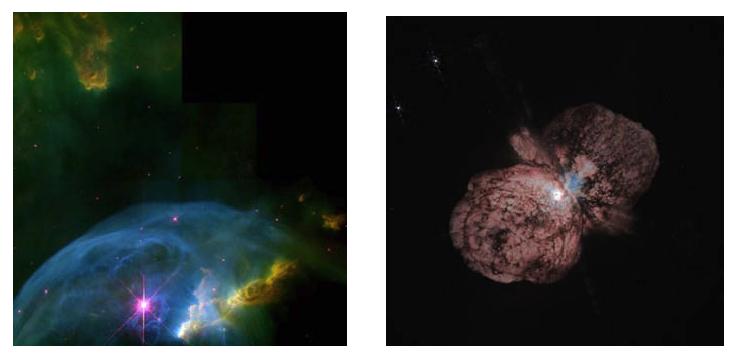Daily Image
02-10-2008Today's colloquium: Stellar Winds and Mass Loss: mechanisms, stellar evolution, interstellar medium (H. Lamers, Utrecht)
| Submitter: | Griessmeier |
| Description: | All stars have stellar winds and loose mass. The mass loss rate of the Sun is only 10**-14 Msun/yr. Such a low mass loss rate does not affect the evolution of the sun. However, near the end of its life when the Sun is an AGB star, the mass loss rate will increase to about 10**-5 Msun/yr. It is this high mass loss rate that terminates the evolution of low mass stars and results in Planetary Nebulae and White Dwarfs. High mass stars have very strong winds and high mass loss rates throughout their life. This affects their observed evolution in many ways: - The peeling-off leads to abundance changes at the stellar surface during the main sequence - The most massive ones stars eject a large amount of mass in the Luminous Blue Variables phase and create Eta Carina like nebulae - They become He-rich or C-rich Wolf-Rayet stars with very strong winds before they erupt as Super Novae Stellar winds blow bubbles in the Interstellar Medium with a bewildering variety of shapes: Planetary Nebulae, Ring Nebulae, Eta Carina like nebulae. I will discuss - the basic mechanisms for the high mass loss rates of hot and cool stars, - its effect on the evolution of low and high mass stars, - its influence on the ISM and the formation of circumstellar nebulae. - how these effects may be different in low metallicity galaxies. |
| Copyright: | H. Lamers |
| Tweet |  |
